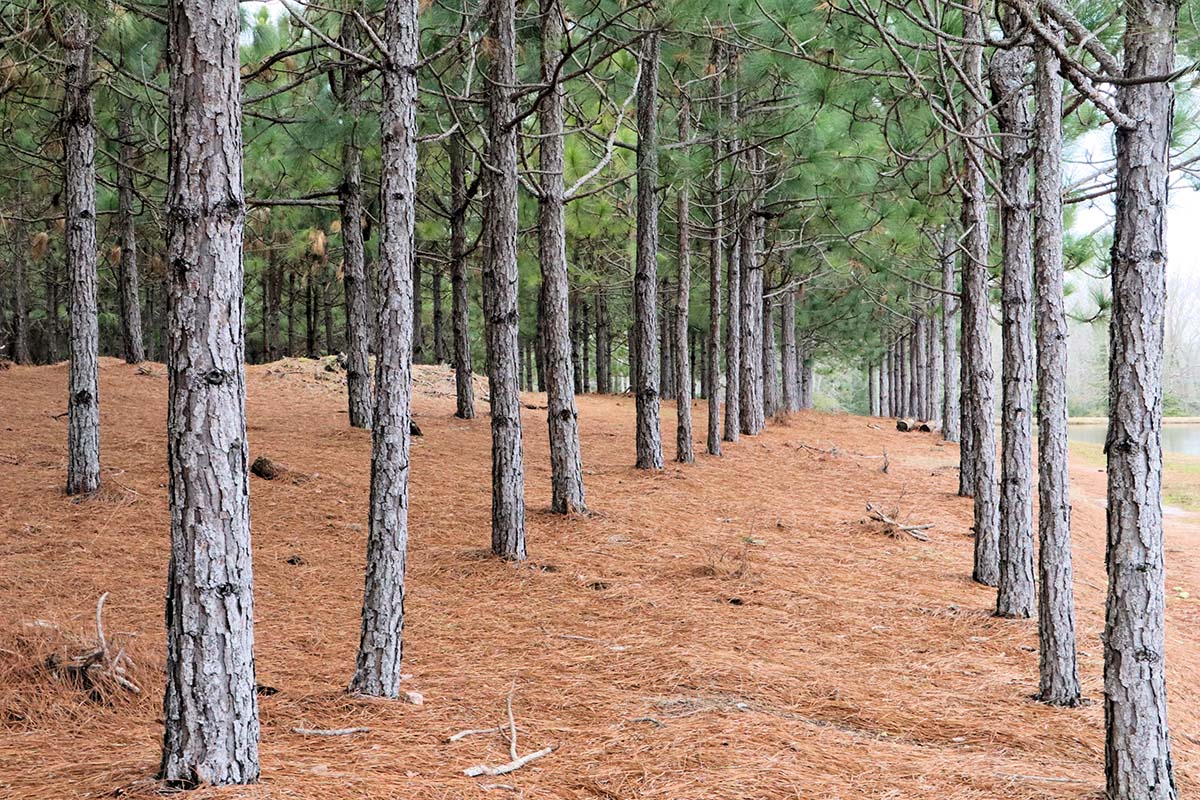Useful, profitable, and beautiful – let’s talk about Southern Yellow Pine.
In the lumber industry, Southern Yellow Pine is talked about a lot. Most of the time, however, not enough context is given for newcomers to the industry to get a firm grasp of what the species is. The lumber industry is a lot of things, having a large learning curve is one of them!
So, for the purchasing managers out there who want a more in-depth knowledge of Southern Yellow Pine, this is the article for you.
Understanding Southern Yellow Pine can be broken up into three categories – its history, its species, and its uses. With a firm grasp of these areas, you’ll leave this article with a much better understanding of Southern Yellow Pine and the lumber industry as a whole.
The History of Southern Yellow Pine
In the United States, the lumber industry is one of the longest continuous industries around – one of the first trees commercially harvested in the New World was Southern Yellow Pine. By the early 1600s, settlers were exporting this tree to Europe where there was a lumber shortage due to increased lumber usage.
Because of vast North American pine forests, Southern Yellow Pine quickly became a staple of the continent. Going forward, Southern Yellow Pine would be a building block of America, and one of its most important resources.
By the 1800s, the North American lumber industry had turned into one of the most profitable industries for our young nation. Southern Yellow Pine was used for many different applications, being made into panels, industrial lumber, homes, and more!
From region to region and species to species, Southern Yellow Pine has continued to be used in the United States. It makes up the majority of softwood in the US lumber market today.
Southern Yellow Pine Species
We’ll let you in on an industry secret, Southern Yellow Pine isn’t its own species. Rather, it’s a blanket term for a variety of 10 different Yellow Pine species in the Southern United States. These different species are often harvested and sold together. The reason for this is that all of these species have very similar characteristics. Now, let’s get down to what type of species are actually on the market. We’ll start with the most common types of Southern Yellow Pine.
1. Loblolly Pine
Loblolly Pine is one of the most commonly used species of Southern Yellow Pine. Being a native species to 15 Southeastern states, the Loblolly has a significant range is and is very populace. One of the meanings of “Loblolly” means mud puddle, referring to where this hardy tree grows. Another term for Loblolly pines is Rosemary Pine, referring to the sweet fragrance of these trees.
2. Shortleaf Pine
As far as Southern Yellow Pines go, Shortleaf Pines have the largest range of any of the other species. Shortleaf Pines can be anywhere from 50-100 ft tall and grow very quickly.
3. Longleaf Pine
Longleaf pines have, and you guessed it, the longest pine strands of any of the Southern Yellow Pines. These trees prefer the loose, acidic soil of the Southeastern United States and require a lot of sunlight to grow.
4. Slash Pine
Slash Pine is one of the fastest-growing Southern Yellow Pines. With two variations, the Slash Pine can be found all across the Southeastern United States. The standard Slash Pine can be found as far north as Virginia and as far West as Texas. The South Slash Pine, a subspecies, can be found from Central Florida to as far south as the Florida Keys.
Those are the four most common Southern Yellow Pine. Now, we’ll go on to the minor species – these are heavily affected by region and are sometimes not available at all.
5. Pitch Pine
Pitch pine ranges from as far North as Maine to as far south as Georgia. This pine is not the prettiest tree, commonly being knotted and growing in peculiar angles. Its bark has an extremely high resin content and was commonly used for turpentine and pine tar before modern industrialization. Now, it’s mainly used for its lumber.
6. Pond Pine
Found as far north as New Jersey and as far south as Alabama, the Pond Pine is also known as the Marsh Pine or Pocosin Pine. This Southern Yellow Pine’s bark is reddish-brown and it has a particular fondness of growing near water. Although it has aquatic tendencies, this pine tree’s cones only open up when exposed to fire – that being said, it’s a fan of wildfires.
7. Sand Pine
Sand pines, if you guessed it, grow near coastal areas in Florida and one county in Alabama. They can grow up to 70ft tall and are often leaning toward one side due to coastal storms.
8. Spruce Pine
Spruce Pine is a medium-sized Southern Yellow Pine that grows in the Southern Coastal Plains of the United States. Its wood is less dense than that of other pines, so its industrial and commercial use is fairly limited.
9. Table Mountain Pine
Table Mountain Pine is a species of Southern Yellow Pine native to the Appalachian Mountains. These trees are commonly seen growing in irregular patterns, both vertically and on the bark.
10. Virginia Pine
Much like Table Mountain Pines, Virginia Pines grow mainly around the Appalachian Mountain range. Unlike other pines, the Virginia Pine takes a long time to reach maturity – 50-60 years depending on climatic conditions.
With these minor species, some of them are considered a separate species group despite them all being Southern Yellow Pine. For instance, Virginia Pine and Pond Pine must be marked as “Mixed Southern Pine” when sold commercially. In the same way, Spruce Pine and Sand Pine must also be marked – these markings can be seen simply as “Spruce Pine” or “Sand Pine.”
Pine Products
Regardless of species, Southern Yellow Pine of any variety is used for similar applications. These applications can be industrial, commercial, and even provide some at-home use. We’ll break down some of the most common industrial and manufacturing uses for Southern Yellow Pine right here and right now!
First up has to be industrial lumber! Now, Southern Yellow Pine can be graded in several different ways, but the most common industrial use wood is graded as 3 or 4. This lumber is sold to manufacturers and is processed into pallets, crates, and other wood packaging material.
Pallets and crates made from Southern Yellow Pine are strong and reliable and can be used for 3-5 years before it needs to be recycled.
Other uses for this industrial Southern Yellow Pine include dunnage, banding groove, pallet cut parts, and more! All of this being said, between these products there lies a ton of use.
Southern Yellow Pine in a Nutshell
The lumber industry is a tough place to operate, especially if you’re confused about what you’re buying! Between its history, different species, and product, we hope that you now fully understand everything there is to know about Southern Yellow Pine.



![[PRESS RELEASE] Conner Industries Announces Website Dedicated to Integrated Packaging Division](https://conner.b-cdn.net/wp-content/uploads/2024/05/Conner-Packaging-Blog-500x383.jpg)



